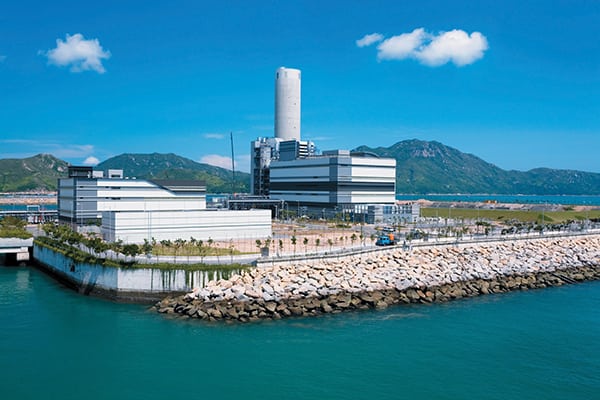Hong Kong Mulls How to Best Replace Coal Power
Since March, Hong Kong has been contemplating two options as it prepares to phase out its coal-fired power plants—which currently produce more than half of its electricity—to improve an enduring local and regional air quality and visibility crisis. One option calls for buying more power from coal-heavy mainland China, and the other is to increase self-sufficiency by increasing local power production from natural gas. A decision is to be made later this year.
The two options, proposed by the Hong Kong government’s Environment Bureau, have been touted as the most achievable means to meet the Special Administrative Region’s projected electricity consumption of 50 billion kWh by 2023—which would represent a 16% increase over 2012—even as several power generating units are slated to be retired. The government’s consultation document also notes that the territory lacks its own indigenous resources for power generation, but that local companies, which have a total generating capacity of about 12 GW and produce about 77% of the region’s power, have ensured reliability exceeds 99.99%. The region’s last major blackout was in the mid-1980s.
Since the mid-1990s, Hong Kong has drawn nearly 25% of its power needs from China’s Daya Bay nuclear power plant in Shenzhen. Both options would keep the level of imported nuclear power at about 20%.
But to get more power from the mainland, as called for in the “grid option,” government authorities conceded that Hong Kong would need to create a new cross-border link, one capable of transmitting about 30% of the region’s projected power demand by 2023 from the shortage-stricken China Southern Power Grid. And it would still require 50% to be generated locally, with 40% from gas and 10% from coal and renewables.
Meanwhile, increasing gas generation under the “local generation” option would mean Hong Kong’s two largest power providers, CLP Power Hong Kong and HK Electric (Figure 2), would need to triple investment in new generation. While natural gas would make up the lion’s share of the region’s generation at 60%, the remaining 20% would still come from coal and possibly renewables.
Officials seem to lean toward the grid option, pointing out that the region already buys all of its gas from the mainland, and that more imports will allow Hong Kong to access a greater diversity of clean energy sources.
In a recent submission to the government’s public consultation on the region’s future fuel mix, CLP Power said a phased and flexible approach combining both planning for initial gas units and intensive study for a new cross-border interconnector would deliver the best long-term value for Hong Kong.
HK Electric, meanwhile, backed the local generation option, pointing out that the grid option is untested and highly uncertain. And while it would involve “engineering complexity and huge land demand,” the grid option would also “endanger Hong Kong’s supply of safe and reliable electricity, increase emissions, with a tariff impact much more significant” than that under the local generation option, noted HK Electric’s Managing Director Wan Chi-tin.
The local option, on the other hand, is “flexible and workable,” said Wan. Responding to concerns about the regional volatility of natural gas prices now and in the future, Wan said rapid gas infrastructure development along the Guangdong Coast is expected, along with new offshore gas field production in the South China Sea.
—Sonal Patel is a POWER associate editor (@POWERmagazine, @sonalcpatel)
